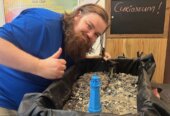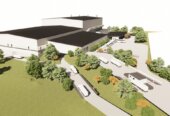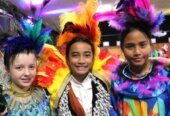I live by a Cambridge green-belt reserve where my favourite birds, native wood pigeon (the kererū), frequently visit.
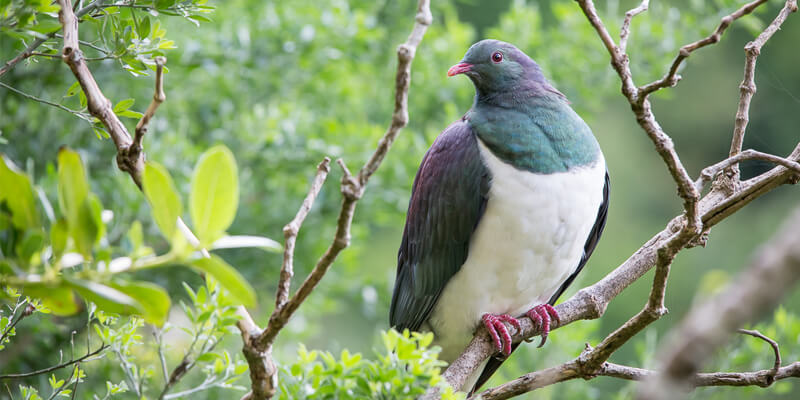
Kererū. Photo: Brendon Doran
Recently an unusually large flock of eight was frolicking high up in the trees. Unexpectedly a group of them, as inquisitive about me as I was with them, broke away from the others. A beautiful quartet of kererū flip-flopped down through the trees to fly noisily just above my head – the characteristic clumsy kerfuffle of their beating wings so close, it stirred up a breeze to gently slap my face.

Murray Smith
An ‘up close’ encounter with kererū makes it abundantly clear just how large these birds are! They can measure over half a metre from tail to beak. Their full bodied physique with shimmering green and iridescent purple-bronze feathers contrasts with spotless white feather vests… bright red feet, red beaks tapering to orange, plus piercing inquisitive red eyes, complete a stunning ensemble!
These beautiful birds warrant appreciation and mindfulness, given that their numbers, while considered somewhat stable, are declining in places. If loss of habitat through forestry remains unchecked along with predators and illegal hunting, kererū will be dangerously exposed. Rats, stoats, cats and possums eat their eggs and nestlings; stoats and cats will even attack and kill adult kererū.
Extinction is a sad outcome for any species and proper stewardship will play a part in helping kererū continue their vital role in our eco-system.
Kererū, together with Chatham Island cousins, the native parea pigeon, are the only two bird species big enough to swallow large fruit, such as those of karaka, miro, tawa and taraire, and disperse seeds over long distances, thus ensuring regeneration of our native forests. The synergy and intentionality of creation, its order and detailed design is fascinating.
Along with millions of others, I’ve appreciated British naturalist and filmmaker David Attenborough’s commentaries and stunning footage, as he gushes enthusiastically about creation’s marvels. I’ve also marvelled that his observations have not led him to conclude that there must be a Creator. No such acknowledgement has been forthcoming, leaving his commendable celebration of nature incomplete.
I say this for two reasons; firstly, because everything cannot come from nothing. A painting demands crediting an artist, design reveals a designer, buildings need architects, engineers and construction crew- nothing randomly occurs nor is order sustained without purposeful intention behind it. Secondly, as it’s succinctly put in the Bible, “God’s invisible attributes, namely, His eternal power and divine nature, can be clearly perceived, since the creation of the world in the things that have been made, leaves people without excuse.”
Attenborough claims to be an agnostic, not an atheist. Whereas an atheist claims emphatically that there is no God, an agnostic takes a less aggressive stance claiming that on the basis of ‘lack of evidence’, you cannot prove God exists. That an intelligent person so enamoured with nature’s wonders vacillates over God’s existence due to ‘insufficient evidence’, astounds me.
“Checking in our brains” at the door is not a pre-cursor to believing. Clearly the very intelligent have no advantage in encountering God.
Faith is needed… though with copious evidence on hand, it’s far from a leap in the dark.
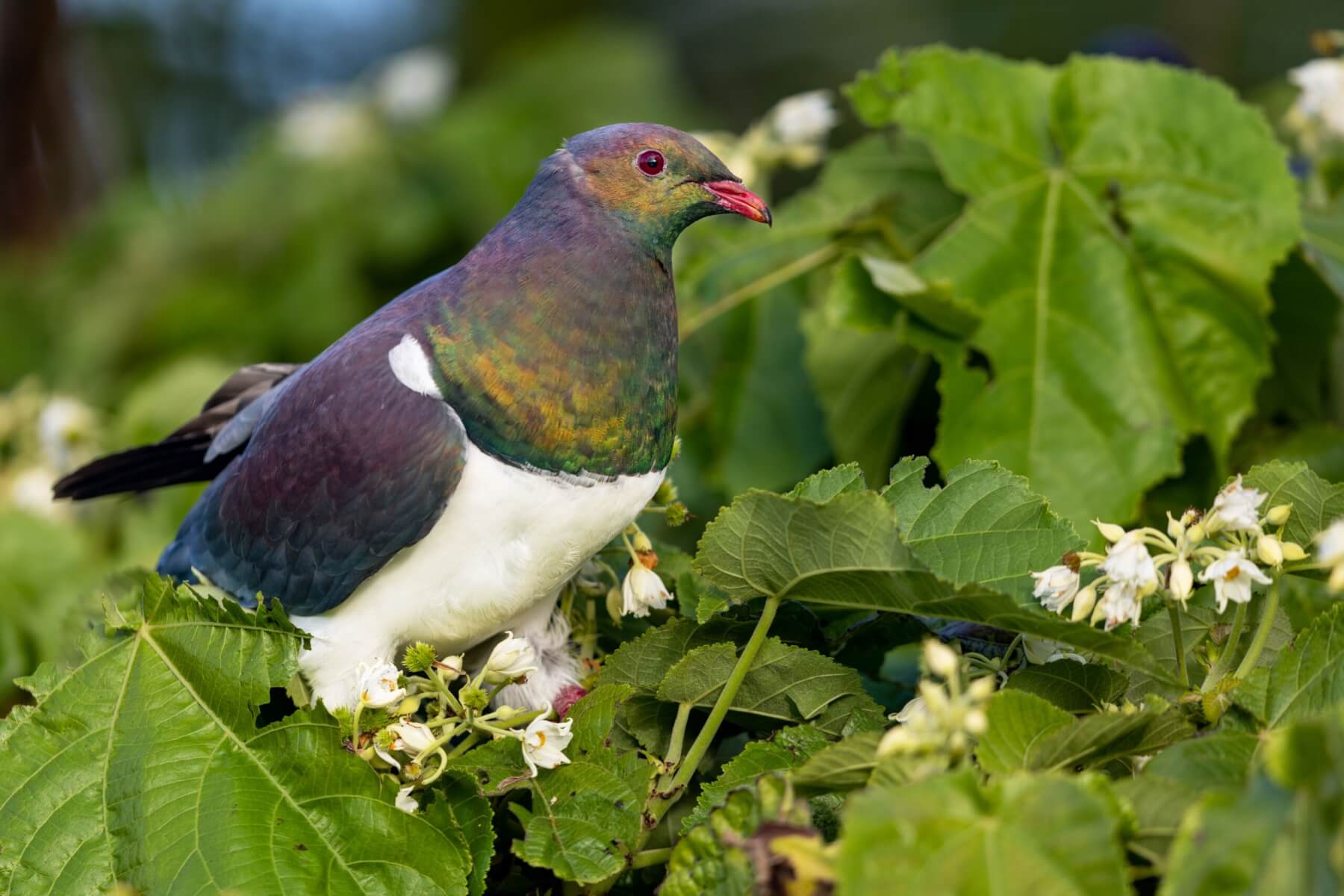
Kererū. Photo: JJ Harrison





